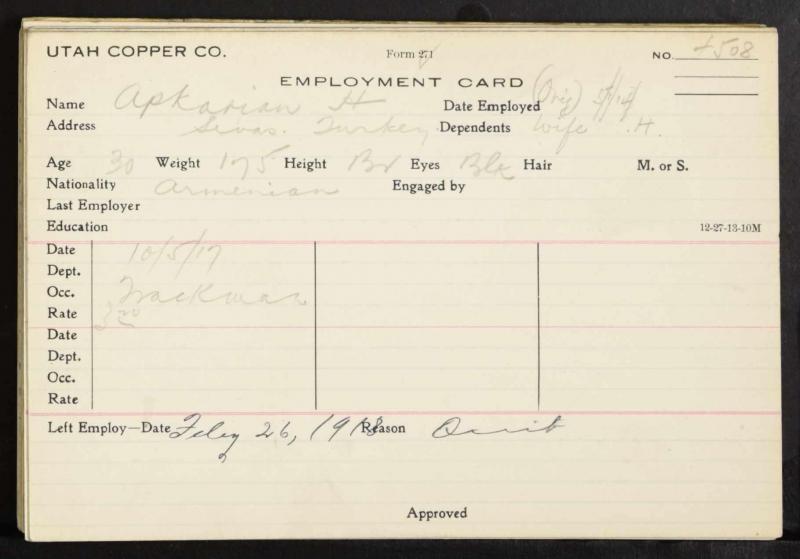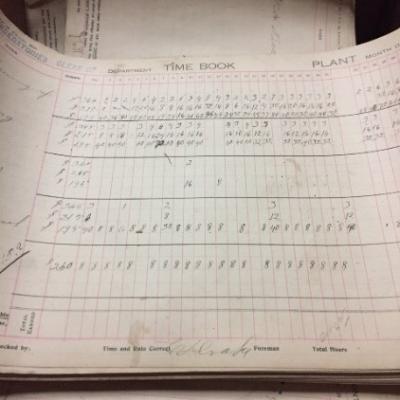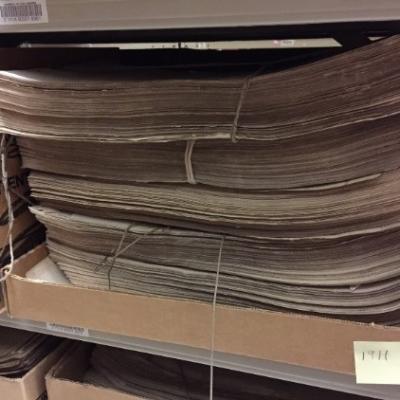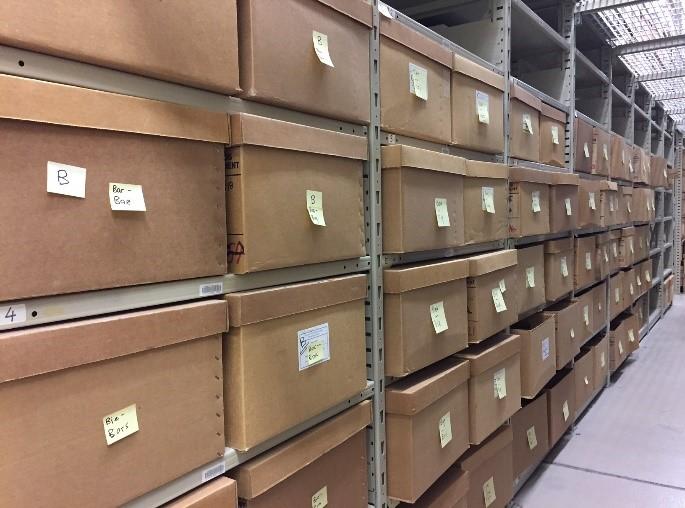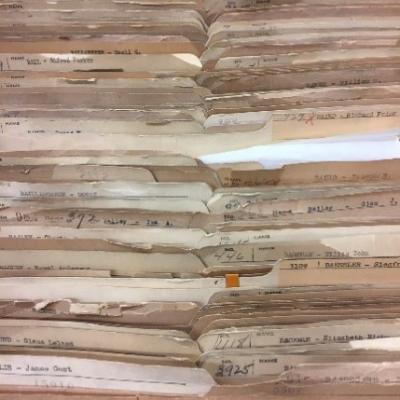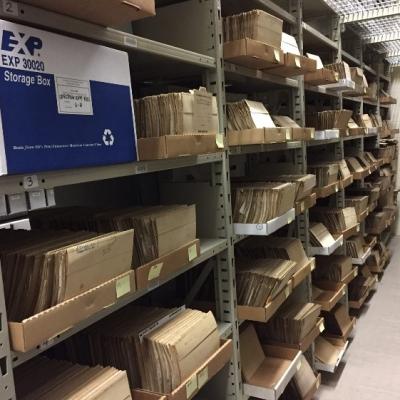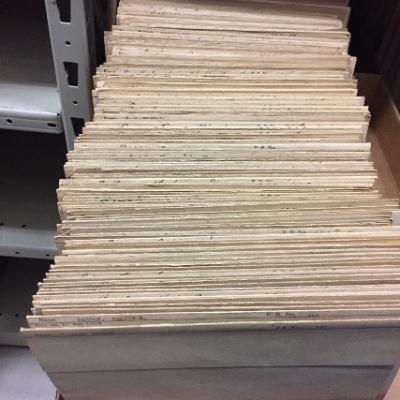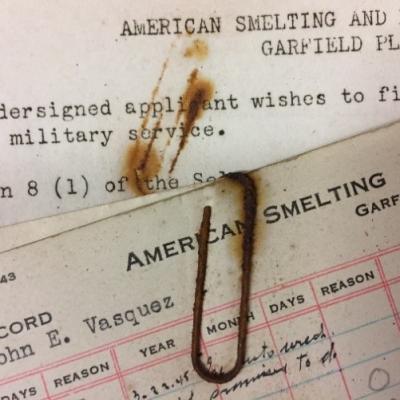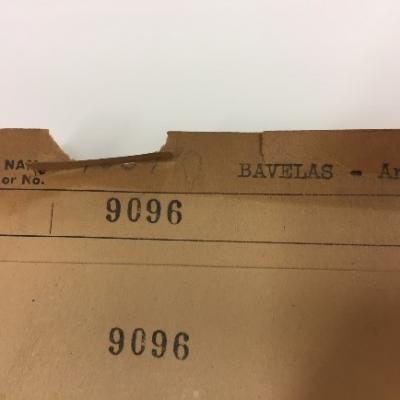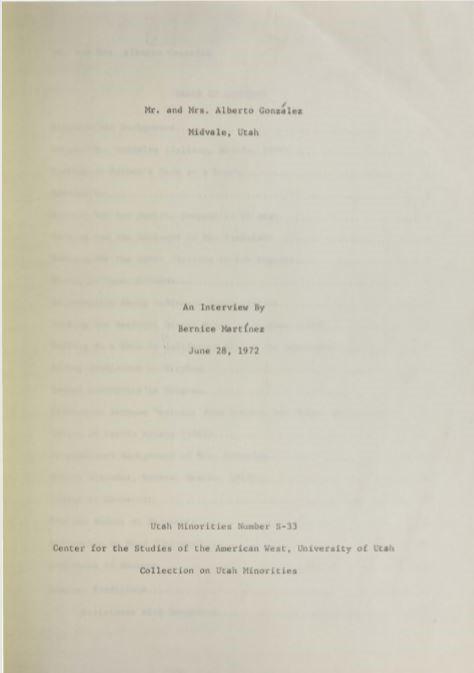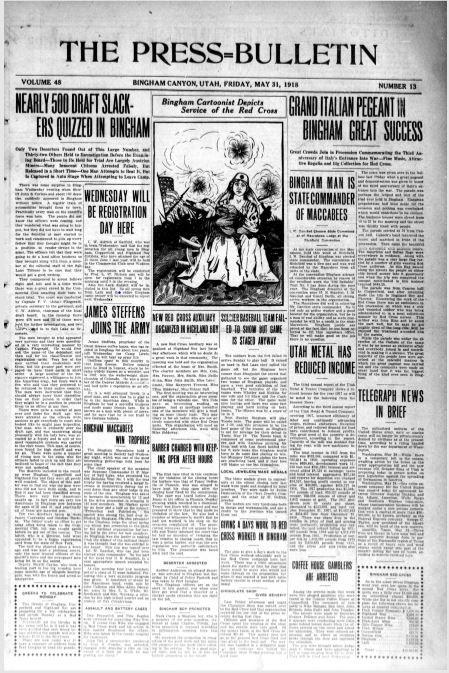Digging into Utah’s Mining History: Archiving the Kennecott Copper Corporation Records Betsey Welland
The Kennecott Copper Corporation Records are a vital part of the archival mining holdings in Special Collections at the J. Willard Marriott Library. Preserving these materials and making the collection accessible is important for those interested in researching the social and economic history of Utah.
In 1936, Kennecott Copper Corporation bought Utah Copper Company and later changed it to the Utah Copper Division. During the 1950s, Kennecott constructed its own refinery and bought the American Smelting and Refinery Company (ASARCO) so it could have a complete production line of mining, concentrating, smelting, and refining. The mining pit, located in the Oquirrh Mountains, is around 4,000 feet deep and still growing under the current ownership of Rio Tinto Mining.
The Kennecott Copper Corporation Records detail its history along with documenting the diverse workforce that helped to develop the mine.
About this Project
This collection consists of: ledgers; employment cards and personnel files; administrative files; property records and technical drawings for the Garfield plant; and numerous technical drawings of machinery and equipment regarding the processes used in copper smelting and refining. The entire collection is approximately 800 linear feet of boxes, cartons, and tubes of materials.
Unfortunately, 378 linear feet had remained unprocessed and unavailable to the public for years.
As an archivist, I decided to take a quick look at the unprocessed cartons to identify the types of materials that had remained inaccessible to the public. What I discovered were thousands of records documenting the history of mining, immigration, labor, and local communities in Utah. The following describes my experiences organizing and processing the remaining cartons, with great thanks to a 2017 grant awarded by the Utah State Historical Records Advisory Board.
Initial Processing of the Records
This project began with an initial review of all the unprocessed materials in order to begin grouping similar types of materials together. Materials were organized into the following groups: ledgers, personnel records, and general business materials.
Ledgers
There were roughly 42 cartons containing stockholder ledgers, general accounting ledgers, labor distribution logs, and foreman time books dating from the 1910s through the 1950s. The ledgers were arranged by year, then incorporated into the processed ledgers to create a chronologically cohesive unit.
Personnel Records
The personnel files were the largest component of the project and were organized by company and then alphabetized according to last name of the employee. The following subseries were created to further describe the files: Utah Copper Company employee cards; Kennecott Copper Corporation employee files; American Smelting and Refinery Company employee files; and the Bingham & Garfield Railway employee files.
There were roughly 84 cartons containing employee records from the Utah Copper Company and Kennecott. These records cover employees who worked at the company from roughly the 1900s through the 1970s. Each carton contained anywhere from 150 through 200 individual employee records. There were about 54 cartons of the American Smelting & Refinery Company and 18 cartons of the Bingham & Garfield Railway, all containing employee records. Each carton consisted of about 140 to 200 individual records.
General Business Records
The general business records were held in about 9 cartons and consisted of reports, affidavits, union contracts and accident forms. Additional personnel and administrative files were also included in the cartons, consisting of correspondence, biographical profiles, and other documents. The processed collection contained files concerned with the planning and construction of employee housing, including contractor correspondence, cost estimates, permit information, and similar documentation. The remaining component of the collection included hundreds of technical drawings pertaining to all aspects of the mine.
Preservation Issues
An issue encountered with the unprocessed collection was the physical condition of some of the records. There were a high number of corroded paper clips and staples throughout the personnel files. Some of the paper clips were so rusty they had burned through the paper. Extra time was spent removing all paper clips and staples in a careful manner in order to prevent further damage to the records.
The original folders were also extremely acidic and would crumbled when handled. Acidic folders were replaced with preservation quality buffered folders which provide support for these fragile documents and help stabilize the acidity of other documents. These folder inserts allowed us to maintain original order of individual personnel records, while removing all the corroded paper clips and staples. Any data on original folders was also available on the personnel records, so there was no loss of content by replacing the folders.
Finding Aid and Digitization Project
Once the collection was fully organized, labels were made for each container and a finding aid was created. Finding aids allow archivists to create an inventory of the entire collection and provide descriptive content pertaining to the collection. This document is uploaded online and made discoverable to researchers worldwide. The Kennecott Copper Corporation, Utah Copper Division Records finding aid is one such document and provides a complete listing of all 1,037 containers comprising the collection.
When the processing project was completed, it was decided to digitize the personnel cards from the Utah Copper Company and index the content to allow them to be searchable online. The library partnered with the Church of Jesus Christ of Latter-day Saints who provided staff who came in and scanned all the cards. Once the cards were scanned, the files were uploaded and indexed by staff in the Digital Library. This project successfully uploaded and indexed 40,535 individual cards that are accessible online through the Kennecott Miner Records located in the Digital Library of the J. Willard Marriott Library.
Additional Resources
Examples of other available resources regarding Kennecott Copper Corporation include the Bingham Bulletin and the Bingham News, available online through the Utah Digital Newspapers (https://digitalnewspapers.org). This was a local newspaper created by the community of Bingham Canyon, Utah. The town of Bingham Canyon was shut down and destroyed due to the expansion of the mine, so memories now live on through photographs, personal stories, and newspapers such as the Bulletin.
Other available resources include the many oral histories held in Special Collections. Oral histories are extremely rich resources that allow researchers the possibility to hear the stories and voices of people who have lived through specific events or times. The Spanish-speaking Oral History Collection (https://archiveswest.orbiscascade.org/ark:/80444/xv23580)contains many great interviews from people who worked in the Kennecott mine.
This is only the tip of the iceberg of available resources. I encourage you to take the time to learn about your local community. Be curious. Ask questions. The J. Willard Marriott Library has a wealth of information with knowledgeable librarians and archivists ready to assist you. Let us help YOU dig into history.

